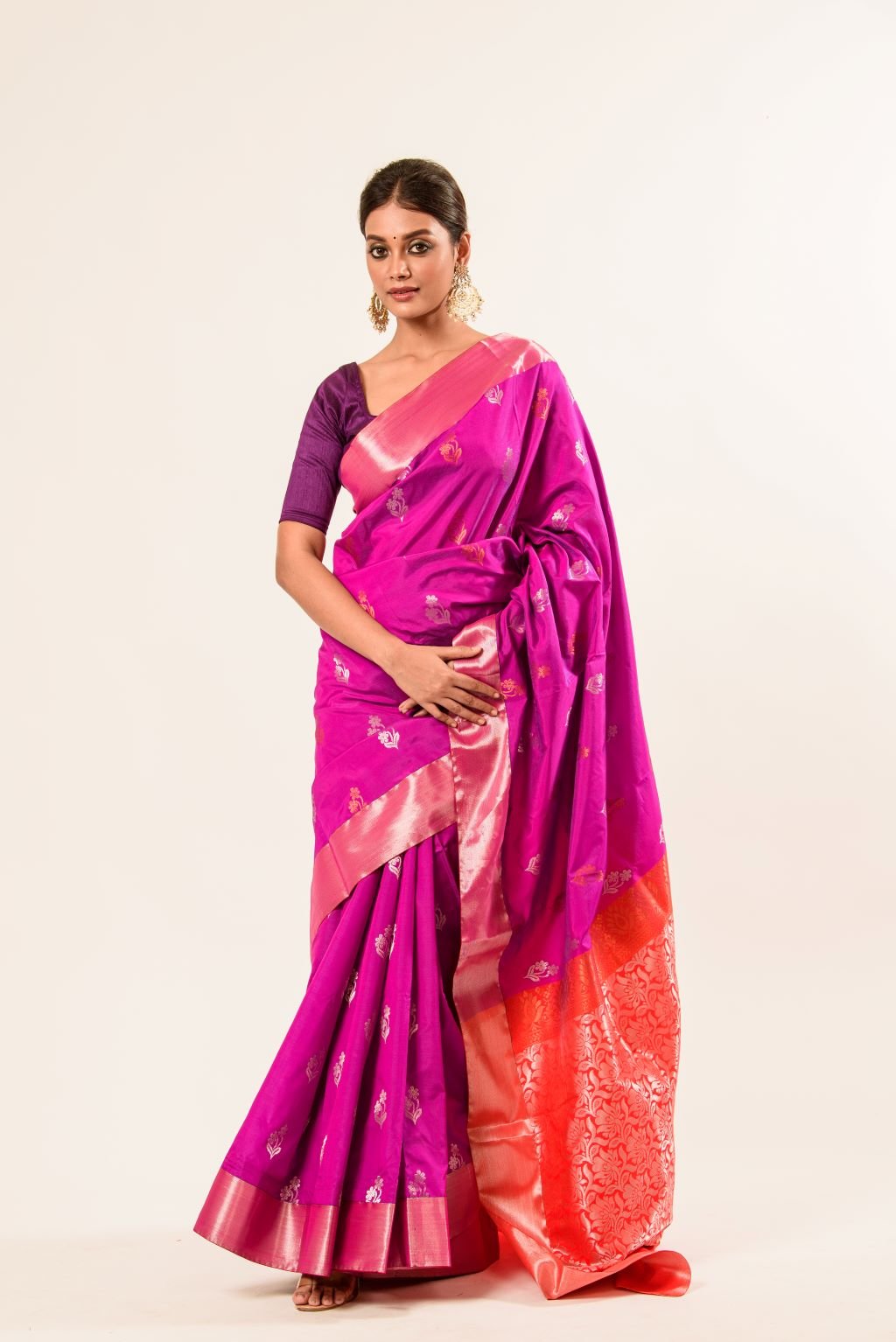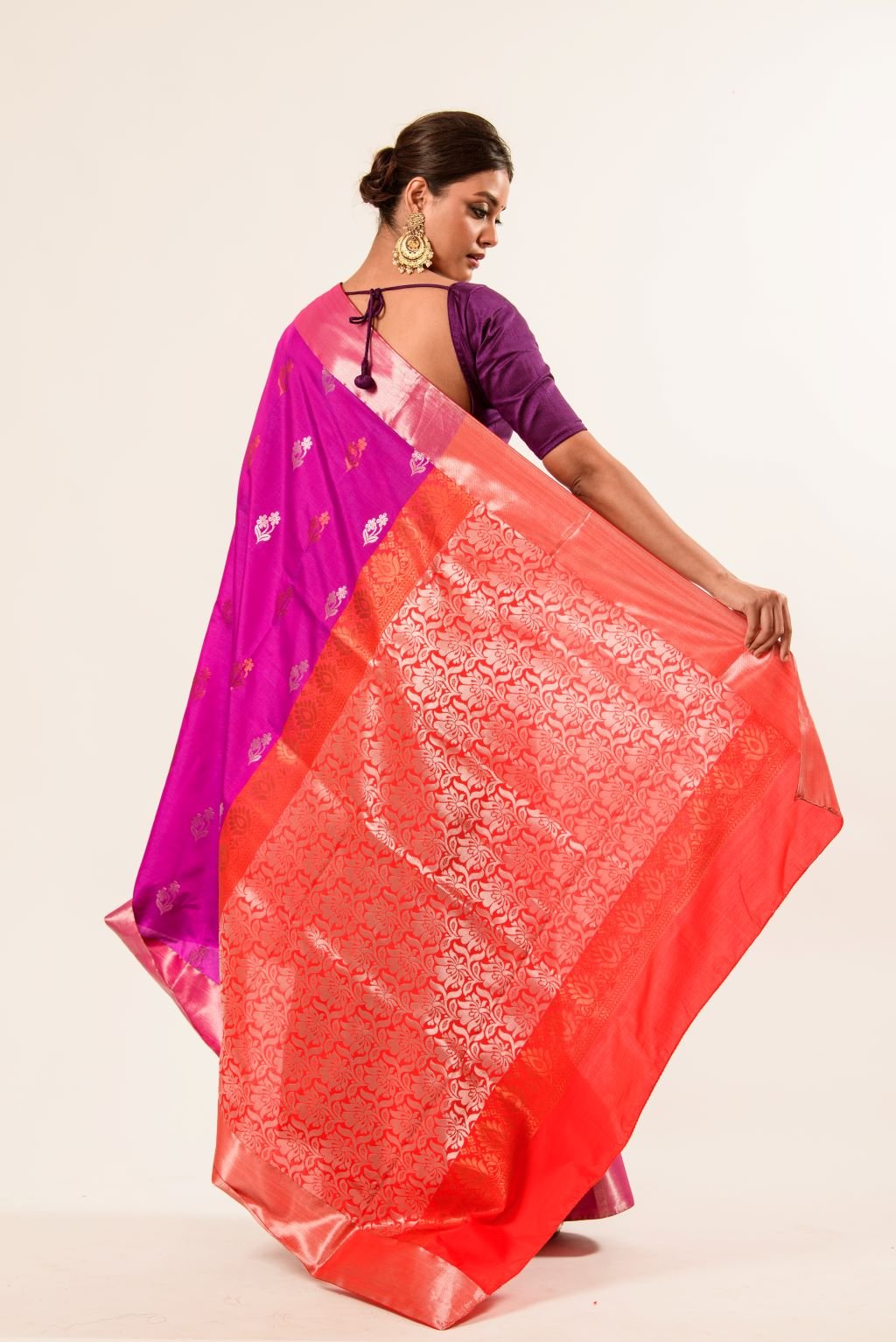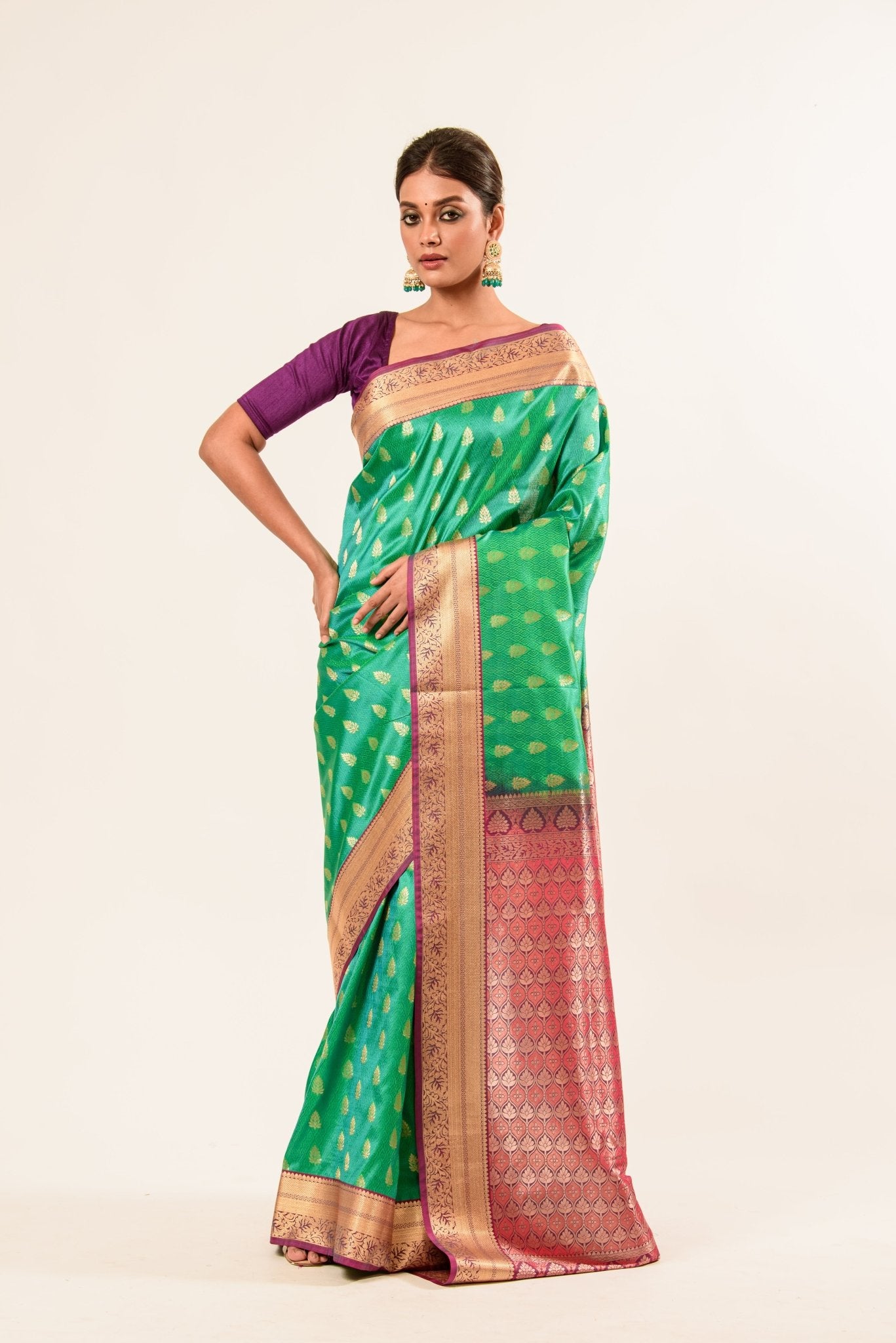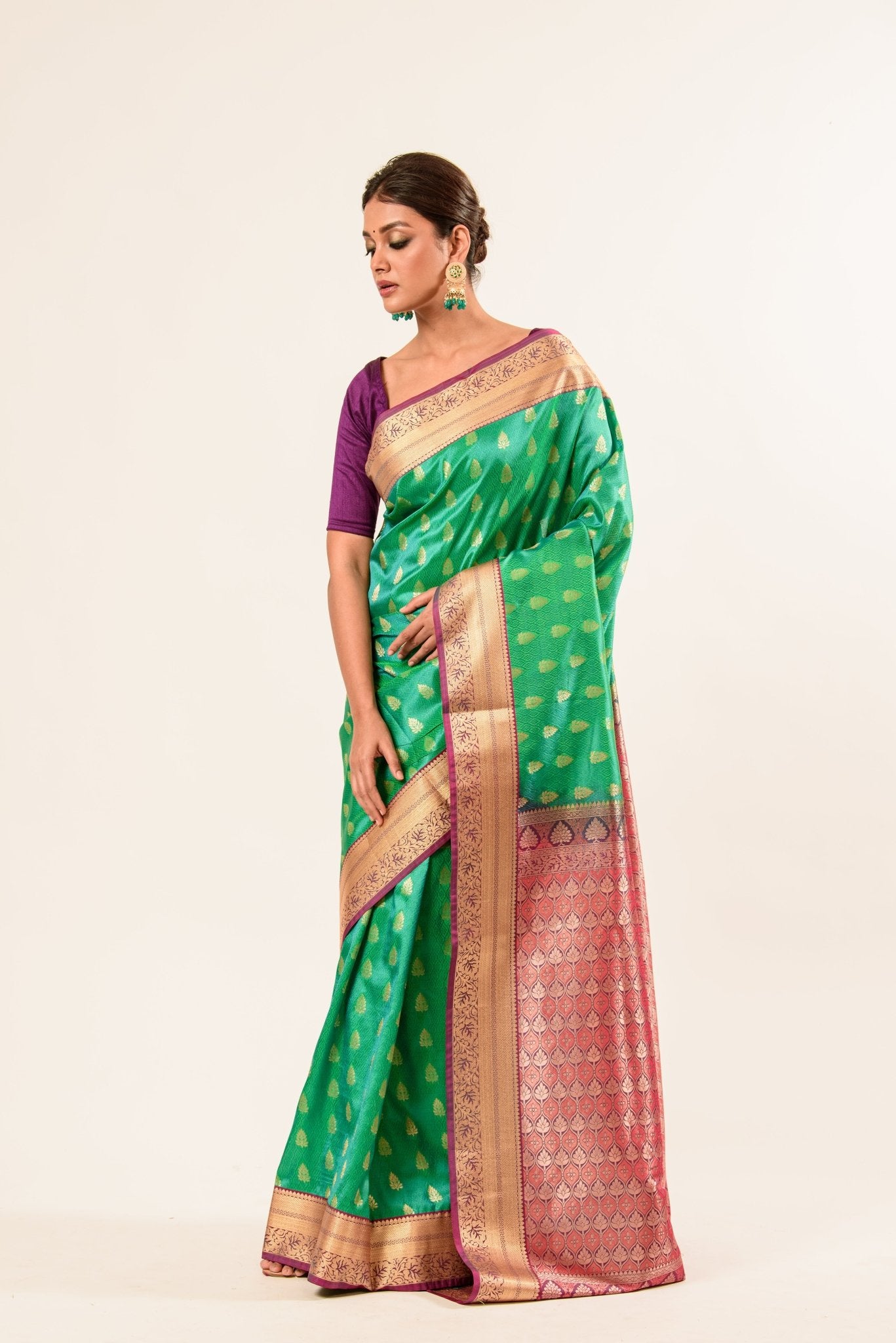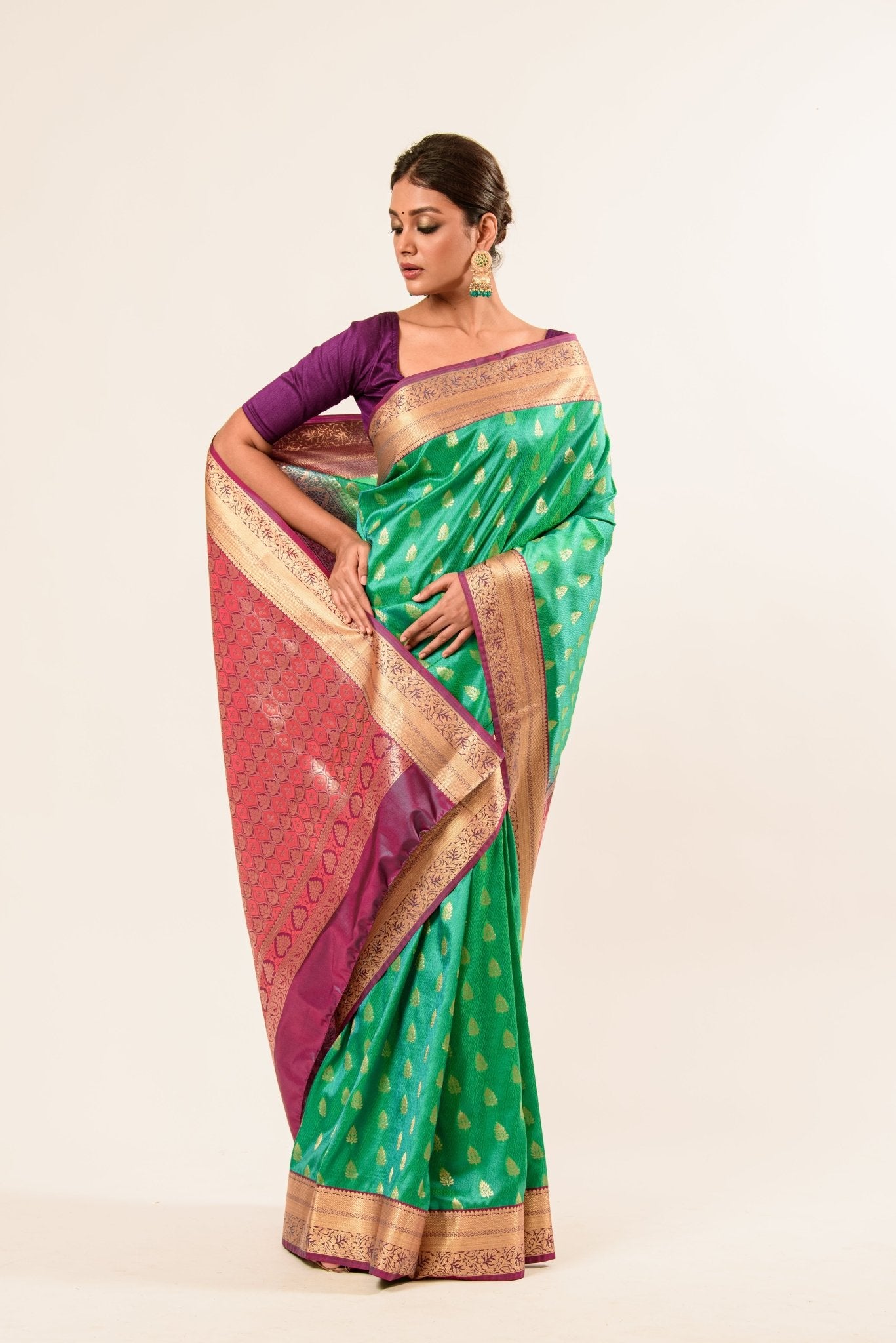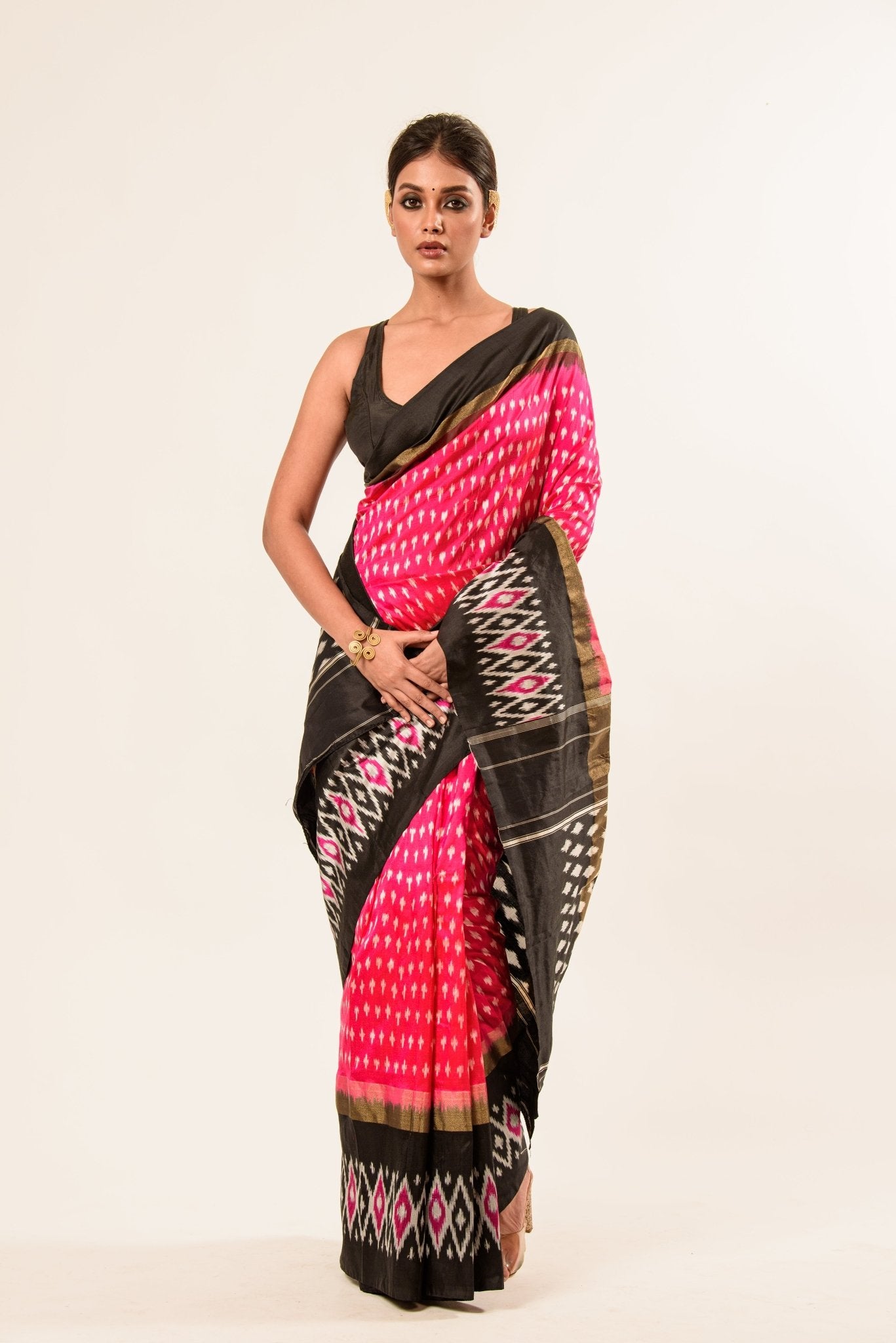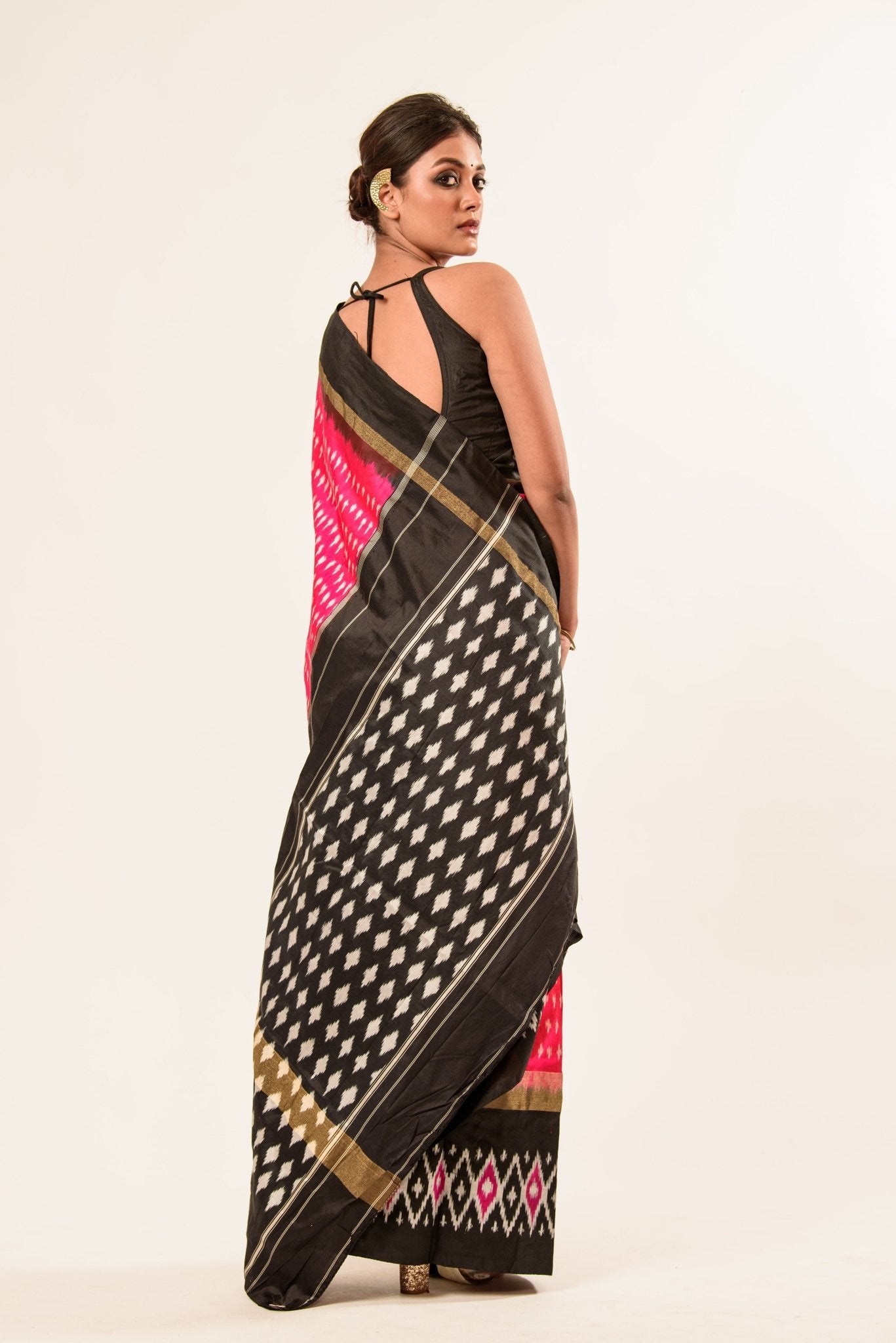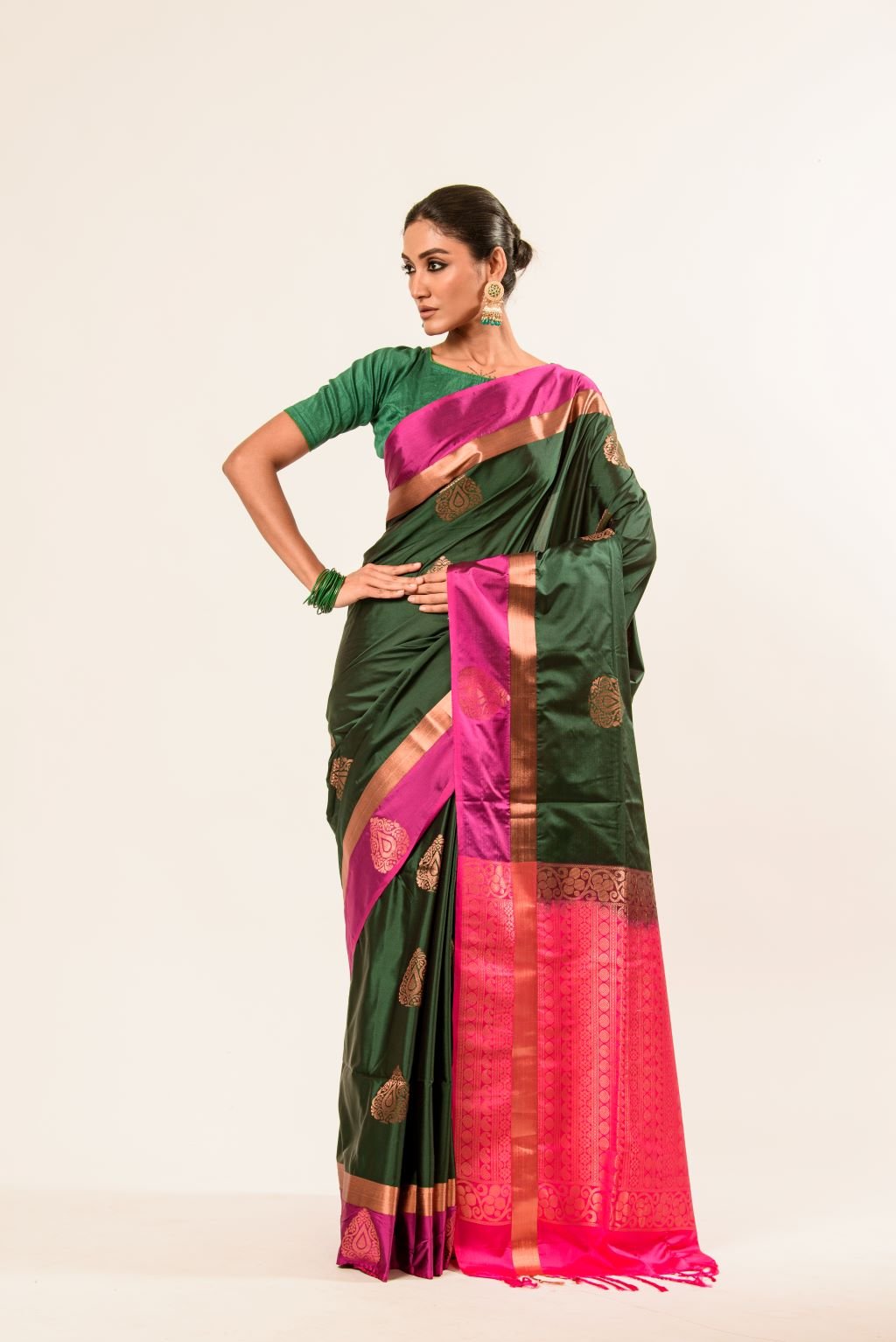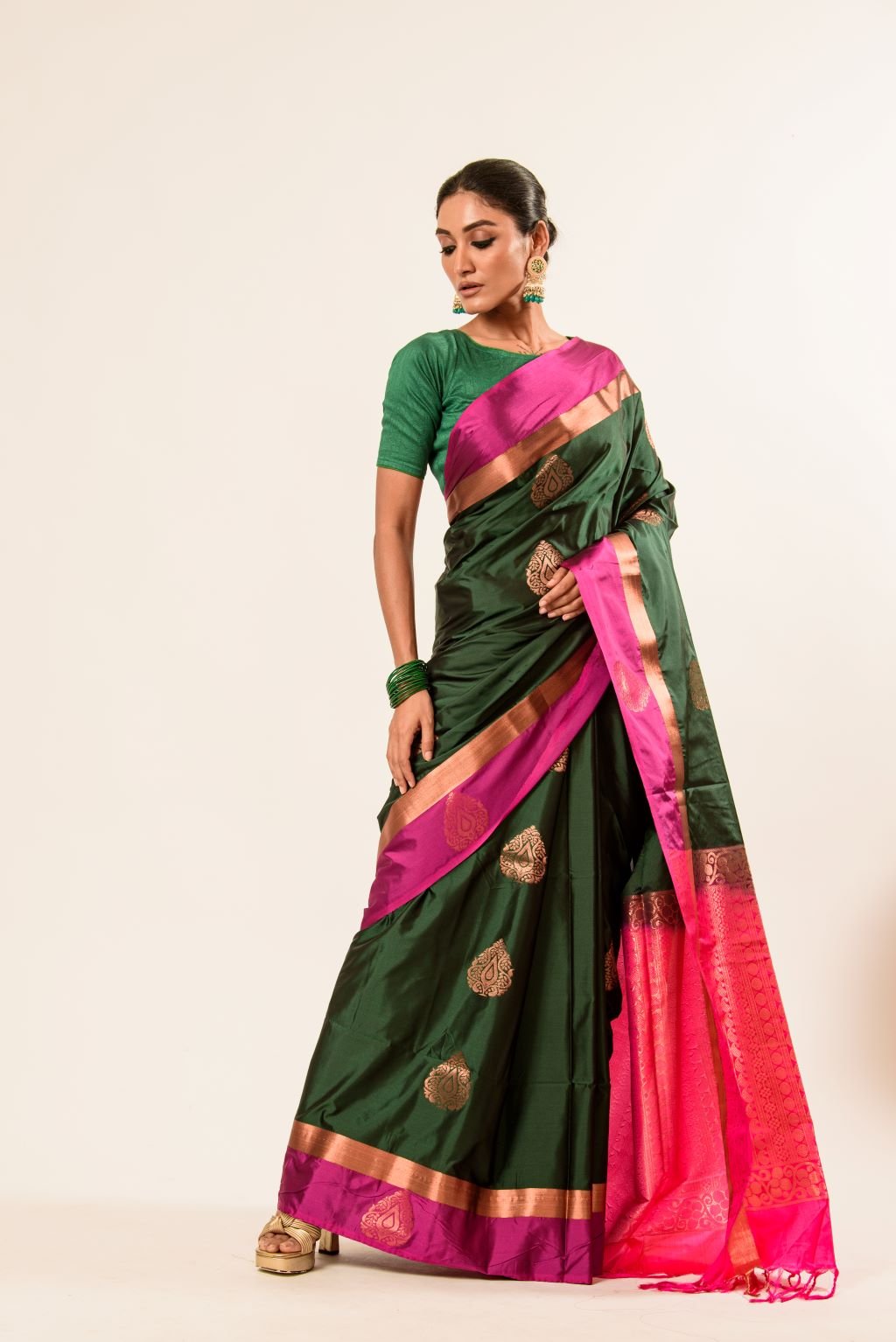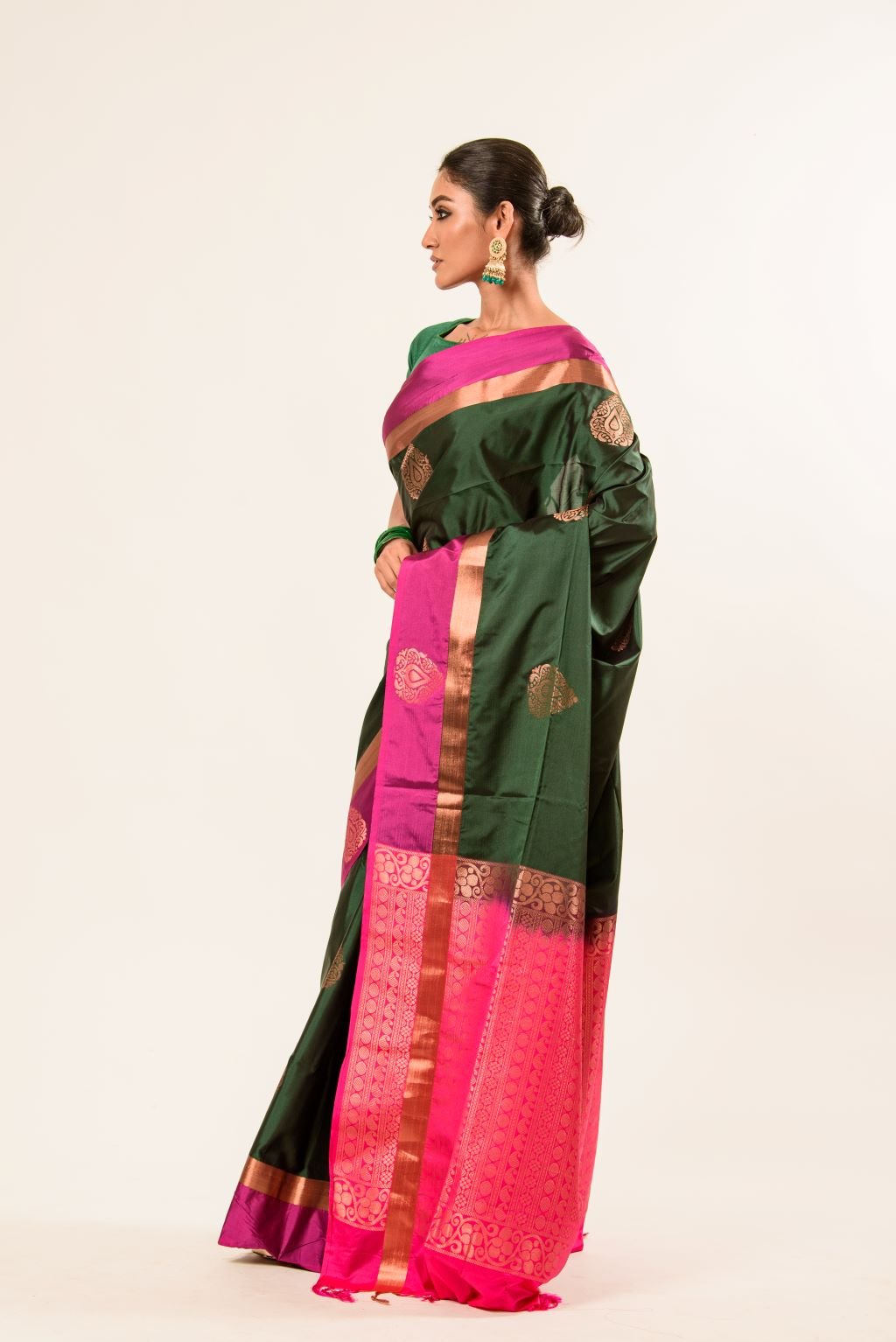In the tapestry of fashion, few garments have the profound cultural significance and majestic allure of the Banarasi saree. Originating from the city of Varanasi, these storied drapes have graced the wardrobes of Indian royalty, A-list celebrities, and everyday women who dream of adorning themselves with elegance woven through the ages.
This detailed exploration into & Banarasi Sarees & serves as a quintessential guide for fashion aficionados to appreciate the varied types of this timeless drape. Whether you're a saree connoisseur, a cultural explorer, or simply seeking to enrich your fashion vocabulary, here's your in-depth look into the myriad facets of Banarasi Sarees.
Understanding the Fabric of Tradition
Banarasi sarees are not just ensembles; they're woven stories that echo the expertise of weavers who pass down their craft through generations. Each saree is an ode to the rich heritage of Indian handlooms and reflects the meticulous artistry that has made it a global sartorial treasure.
The Essence of Banarasi Sarees
At the heart of Banarasi sarees lies their regal essence, evident in the use of premium materials and opulent designs. They are often distinguished by gold or silver brocade, zari work, fine silk, and intricate embroidery that exude luxury and sophistication. The process of making a Banarasi saree involves several stages, from dyeing the silk threads to the delicate process of hand-weaving and adding the embellishments, making it an elaborate yet rewarding labor of love.
The Craft and Weaves of Banarasi
Crafted through time-honored techniques, Banarasi sarees are classified into numerous types based on their weaving styles, patterns, and motifs. Here are some of the most prominent variations, each with its unique characteristics:
Kadhwa Sarees
Kadwa or Kadhuwa involves weaving the design individually without using a shuttle. The process is so detailed that it can take days to complete a single saree, but the result is a bewitching array of floral and animal motifs in rich, bold colors that have become synonymous with wedding ensembles.
Tissue Sarees
Tissue fabric, also known as tissue silk or tissue organza, is a lightweight and sheer fabric with a crisp texture. Made from silk or silk blends, it boasts a high sheen that gives off a lustrous and luxurious appearance. This exquisite material is coveted for its elegant drape and shimmering effect, making it perfect for special occasions and formal attire like the renowned Tissue Banarasi sarees. Crafted using the traditional weaving techniques of Banaras (Varanasi) in India, skilled artisans intricately weave patterns and motifs onto the fabric using handlooms, creating a rich tapestry of designs.
Cutwork Saree
Cut work Banarasi sarees beautifully blend the opulence of Banarasi weaving with the elegance of cut work embroidery. These sarees boast detailed weaving patterns and motifs typical of Banarasi sarees, enhanced by intricate cut work embroidery on specific areas like borders, pallu, or body Showcasing a range of elaborate designs, Cut work Banarasi sarees artfully combine weaving and embroidery techniques. Traditional elements like florals, paisleys, vines, and geometric patterns are intricately woven, while cut work embroidery adds refined details and embellishments to these timeless pieces.
Jangla Sarees
Jangla Banarasi sarees are known for their exquisite jangla weaving pattern, creating a mesh-like design with diamond-shaped motifs. Crafted from high-quality silk fabric, these sarees feature intricate designs like paisleys, florals, and peacocks woven with fine silk or zari threads. The result is a delicate and ornate saree that exudes richness and beauty.
Tanchoi Sarees
Tanchoi sarees are lighter in weight and are distinguished by the unique way the back and front warp of colors are interwoven, resulting in a myriad of colorful patterns. This exuberant use of colors and designs makes them a favorite for those seeking a playful yet traditional look.
Khaddi Banarasi Saree
Khaddi Banarasi Saree, also known as Khadi, is a handwoven fabric crafted from natural fibers like cotton, silk, or a blend of both. This fabric is celebrated for its unique texture, breathability, and rustic appeal. Khaddi Banarasi sarees beautifully merge the sophistication of Banarasi weaving with the simplicity and adaptability of Khaddi fabric. Available in a diverse array of designs, patterns, and color blends, these sarees can showcase intricate traditional motifs or minimalist designs for a modern and refined aesthetic.
Vasket Art
Magnificent Banarasi treasures with a rich dose of zari in the most endearing of palettes. An extraordinary collection of shimmering silken drapes, crafted in timeless Zari Vasket art passed down through generations. Meticulously woven using a supplemental zari weft throughout the body.
Shikargah Banarasi Saree
Shikargah Banarasi sarees are a true masterpiece of traditional handloom weaving, showcasing intricate motifs inspired by nature and wildlife. Crafted by skilled artisans using age-old techniques, each saree is a labor of love woven on hand operated looms. The elaborate designs feature animals like lions, tigers, and elephants, intertwined with elements of forests and foliage in rich silk or zari
threads.
Zarkashi Banarasi Saree
Zarkashi Banarasi sarees are a masterpiece of traditional craftsmanship from Varanasi, India. Skilled artisans weave these sarees using hand-operated looms, meticulously creating intricate designs and patterns. What sets Zarkashi Banarasi sarees apart is the exquisite Zardozi embroidery, an ancient art form that combines metallic threads, precious stones, beads, and sequins to adorn the fabric.
Banarasi Bandhej
Banarasi weaving, originating from Varanasi in Uttar Pradesh, India, is famed for its detailed designs, lavish silk fabrics, and exquisite craftsmanship. Woven using traditional handloom methods passed down through generations, Banarasi sarees, dupattas, and fabrics showcase the skill of artisans. Bandhej or Bandhani is a tie-dyeing technique hailing from Rajasthan, Gujarat, and western India. This method involves tying sections of fabric with threads to form intricate patterns before dyeing it to achieve vibrant colors. The tied areas resist the dye, resulting in unique designs like dots, waves, or squares on items such as sarees and dress materials.
Zardosi Banarasi
Zardosi Banarasi sarees blend the timeless charm of Banarasi weaving with the intricate beauty of Zardosi embroidery. These sarees showcase elaborate motifs, paisleys, floral designs, and intricate patterns through zardosi work on luxurious Banarasi silk.Crafted from finely woven silk, Zardosi Banarasi sarees are renowned for their opulent gold or silver zari work, intricate designs, and lavish texture. Zardosi, a metal embroidery technique using gold or silver threads, precious stones, beads, and pearls, originated in ancient Persia and gained popularity in Indian textiles for bridal and formal wear.
Butidar Banarasi Saree
Butidar Banarasi sarees are exquisite creations primarily made from high-quality silk, including pure silk or silk blends. Renowned for their smooth texture, lustrous sheen, and luxurious feel, these sarees provide an ideal canvas for intricate weaving and zari work. Available in a diverse array of designs, colors, and patterns to cater to various tastes, Butidar Banarasi sarees may showcase dense butti work all over the fabric or highlight butti motifs on specific areas like borders, pallu, or the body of the saree. This variation results in a distinct and visually captivating appearance.
Understanding the Fabric of Tradition
Banarasi sarees are not just ensembles; they're woven stories that echo the expertise of weavers who pass down their craft through generations. Whether it's a classic Banarasi or a designer saree with contemporary touches, each piece is an ode to the rich heritage of Indian handlooms and reflects the meticulous artistry that has made it a global sartorial treasure.
Shop Sarees By Colour
| Saree Color | Ideal Occasion |
| Red Sarees | Weddings, Engagements, Karva Chauth, Festivals |
| Green Sarees | Mehndi Ceremonies, Traditional Puja, Eco-themed Events |
| Grey Sarees | Contemporary Gatherings, Office Parties, Subtle Elegance for Day or Night |
| Yellow Sarees | Haldi Ceremonies, Daytime Functions, Spring Events |
| Pink Sarees | Baby Showers, Birthday Parties, Romantic Dinners |
| Blue Sarees | Evening Parties, Corporate Events, Receptions |
| White Sarees | Temple Visits, Traditional Ceremonies, Peaceful Gatherings |
| Black Sarees | Cocktail Parties, Formal Events, New Year Celebrations |
| Orange Sarees | Navratri, Religious Events, Cultural Gatherings |
| Purple Sarees | Engagements, Festive Celebrations, Theme Parties |
| Peach Sarees | Summer Weddings, Brunches, Casual Daytime Gatherings |

